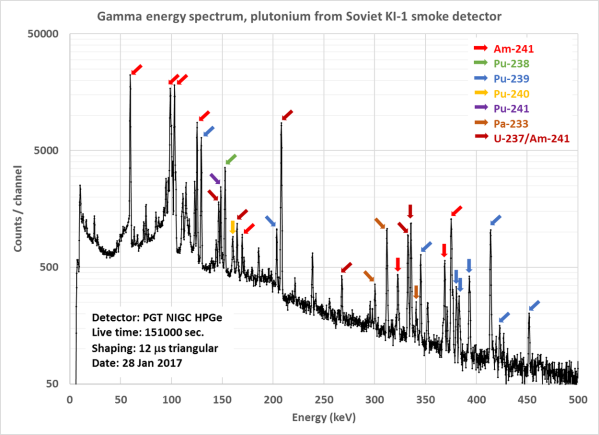It’s widely known that a smoke detector is a good ionizing radiation source, as they contain a small amount of americium-241, a side product of nuclear reactors. But what about other sources? [Carl Willis] got hold of an old Soviet era smoke detector and decided to tear it down and see what was inside. This, as he found out, isn’t something you should do lightly, as the one he used ended up containing an interesting mix of radioactive materials, including small amounts of plutonium-239, uranium-237, neptunium-237 and a selection of others. In true hacker fashion, he detected these with a gamma ray spectroscope he has in his spare bedroom, shielded from other sources with lead bricks and copper and tin sheets. Continue reading “Soviet Era Smoke Detector Torn Down, Revealing Plutonium”
Yikes2 Articles
90,000 Lumen Flashlight Is Illuminating, Impractical And Blindingly Good
It may be better to light a single candle than to curse the darkness, but that was before [RCTestflight] came up with this: a 1000W LED flashlight that outputs about 90,000 lumens of light. That’s a lot: the best pocket LED flashlights output about 700 lumens.
[RCTestflight] built this monstrosity using ten 100-Watt LEDs, running off two RC car batteries. Each of the LEDs is connected to a sizable voltage converter and a very large heatsink that holds all of them in place. He says he gets about 8 minutes of light out of this thing, and that the heatsink gets warm after a minute or two of use. We’re not surprised: LEDs are more efficient than most other devices at converting electrical energy to light, but some always gets lost as heat.
Check out the video after the break. It’s very impressive, but this thing isn’t particularly practical as a handheld. It is big, heavy and is visible for miles. If you really want to light something up it does a great job (for a short period of time) due in part to the inclusion of a glass lens for each of the LEDs. This effectively focuses the beam on a properly distributed area. We wonder what would happen if all the beams were focused on one point? As long as you don’t cross the streams…
We have covered a few more practical builds using similar LEDs, but this thing does have a certain outrageous charm, and could be useful for high-speed video, where the more light, the better.
Continue reading “90,000 Lumen Flashlight Is Illuminating, Impractical And Blindingly Good”












